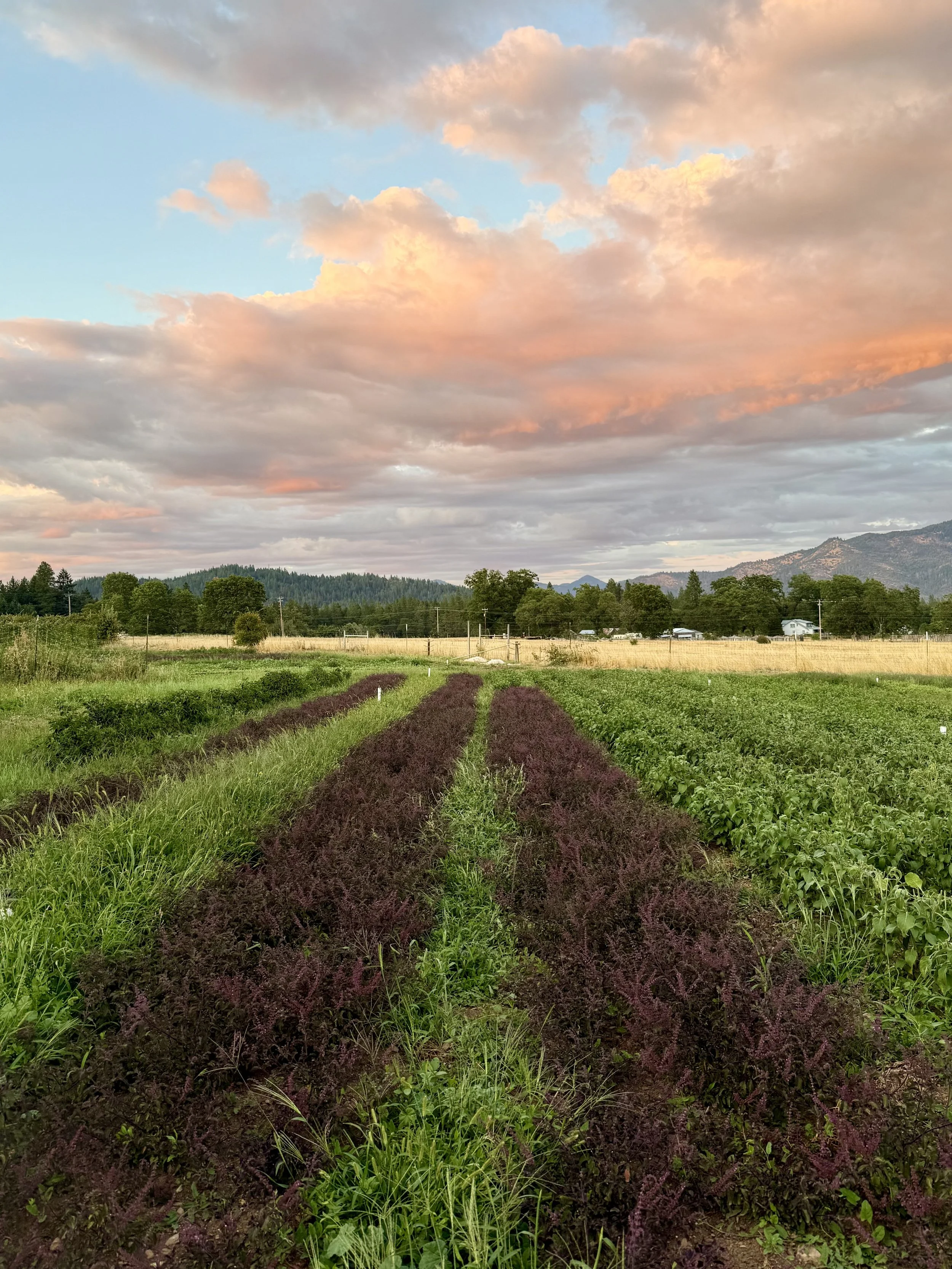Behind the Scenes- Tulsi Harvesting in Williams, Oregon
Ahh, Tulsi. Also known as Holy Basil, this herb has a long history in Asia and Ayurveda. Tulsi is in the Lamiaceae plant family, along with other basils, mints, and sages. There are many different varieties of basil, but I’ve had the chance to work closely with four Tulsi varieties on a small organic farm in Williams, Oregon- Krishna, Rama, Vana, and Temperate.
The Tulsi here is getting processed for tea, which is one of the most common ways to use Tulsi medicinally. Tinctures, tablets, and oils made with Tulsi are also widely available. Organic India has a wide variety of Tulsi teas, as it mixes well with other herbs. My friend Sarah at Wasatch Pantry puts tulsi in most of her tea blends.
Harvesting & Processing Holy Basil
Soon after the Tulsi has flowered, we gather our baskets and sickles and get to work. Careful to get the flowers and plenty of leaves, we chop the tulsi, encouraging her to grow more flowers. We then take it up to the drying room- a large room in the barn filled with dehumidifiers and fans- and spread it on wire shelves to dry. Once dry, we gather everything into large bags typically 18-28 pounds, to get garbled. To garble, we gather around a wire table and massage the Tulsi into a screen that filters out most of the larger stems and sends the flowers and leaves into a tarp. In an afternoon, 5 of us can garble about 30 pounds of Tulsi. The tulsi then gets another screen to remove any stems that have fallen through. After that, it’s ready to get processed into tea.
Most tea manufactures are not this thorough. This particular tea product requires a lot of processing, and is a higher quality product. Typically this whole process would be done with machines, and you would get stem in with your product.
Krishna Tulsi
Rows of purple leaves and purple stems identify Krishna Tulsi flowering.
Four Sacred Varieties of Tulsi
There are four primary types of Tulsi, each with unique properties and growing conditions. Temperate Tulsi is the most common used in Western medicines because it grows quickly.
1. Krishna Tulsi (Ocimum tenuiflorum, purple variety)
Appearance: Deep purple stems and leaves, highly aromatic.
Properties: Considered the most potent variety in Ayurveda, rich in antioxidants and strong adaptogenic qualities.
Uses: Often prepared as a tea for respiratory health and immunity.
Growing in America: Thrives in warm, sunny climates with well-drained soil. In cooler regions, it’s often grown in pots and brought indoors during the colder months.
2. Rama Tulsi (Ocimum tenuiflorum, green variety)
Appearance: Bright green leaves, milder fragrance than Krishna Tulsi.
Properties: Known for its calming effect on the nervous system.
Uses: Commonly used in teas and tinctures for stress relief and digestion.
Growing in America: Easier to grow than Krishna Tulsi, adapting well to gardens across the U.S. during summer. Like basil, it prefers full sun and warm soil.
3. Vana Tulsi (Ocimum gratissimum, wild forest Tulsi)
Appearance: Larger, light-green leaves with a more earthy aroma.
Properties: Renowned for uplifting the spirit and supporting energy and stamina.
Uses: Used in teas and tonics for rejuvenation and vitality.
Growing in America: More cold-hardy than other Tulsi types, making it a good option for temperate U.S. regions. Still benefits from greenhouse or indoor cultivation in colder zones.
4. Temperate Tulsi (Ocimum africanum, a hybrid adapted for cooler climates)
Appearance: Green-leaved variety developed for resilience.
Properties: Balances the qualities of Rama and Vana, offering adaptogenic and immune-supporting benefits.
Uses: A favorite among herbal growers in North America for its adaptability and health benefits.
Growing in America: Specifically bred to thrive in temperate regions, it can be grown outdoors in most U.S. summers, and even overwinters in some mild climates
Thank you to all of my teachers in Williams, Oregon, and Banyan Farm and Banyan Botanicals for hosting me in the Living Ayurveda Internship. I am forever changed and in debt to this beautiful plant. You can see Banyan’s Tulsi products here.






